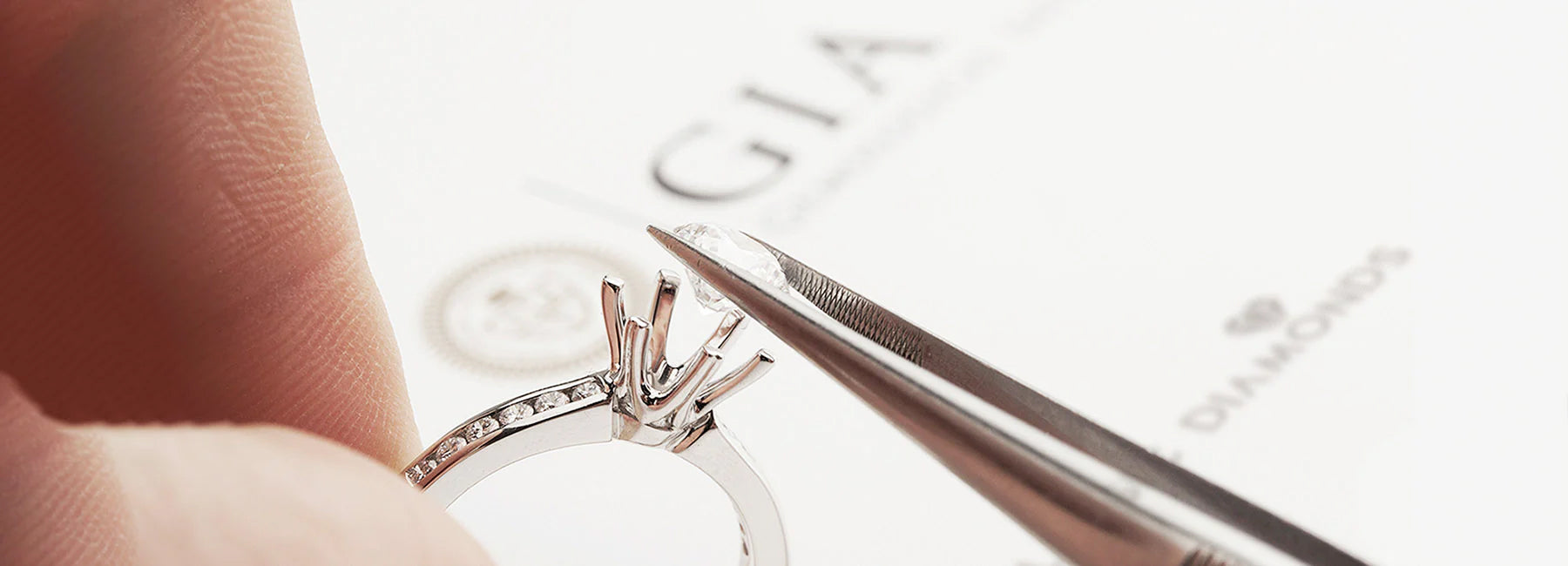Lab Grown Diamons Uncovered
What are Lab Grown Diamonds?
Diamonds have long symbolised love, luxury, and brilliance. But as we move forward, the way we source them is evolving. Lab-grown diamonds are redefining the jewellery industry, offering the same breathtaking beauty as mined diamonds, with added benefits that make them a smarter, more sustainable choice.
Their rise in popularity comes as no surprise. Lab-grown diamonds are real, identical to natural diamonds in brilliance, durability, and beauty, yet without the ethical concerns or environmental impact of traditional mining. Unlike natural diamonds, which take billions of years to form beneath the Earth’s surface, lab-grown diamonds are created in a controlled environment that mimics nature’s process in just a few weeks. With a more accessible price point, they allow you to enjoy a higher-quality diamond without compromise.
Whether you’re new to the concept or already considering them for your next jewellery piece, we’ve curated everything you need to make an informed, confident choice.

What Is a Lab Grown Diamond?
Lab diamonds are 'grown' in a lab by scientists, using cutting-edge technology that replicates the process of natural diamonds. A lab-grown diamond is chemically, physically, and visually identical to a mined diamond, without the adverse effects of traditional diamond mining.
The result? An ethically grown diamond with the same brilliance, beauty, and quality, without compromise.

Are lab grown diamonds real?
Yes. Lab-grown diamonds are real diamonds, not simulants, not synthetic imitations. They are identical to mined diamonds in every measurable way: same hardness, same sparkle, same structure.
To the naked eye, they are indistinguishable from mined diamonds. Only specialised gemmological equipment can detect their origin.
“Lab-grown diamonds are real diamonds. They have the same optical, chemical, thermal and physical features.”
Matthew Hall, Director, Gemological Institute of America (GIA)
The Process
How are Lab Diamonds Made?
Diamonds are made of carbon and need intense heat and pressure to form their crystalline structure. In nature, this happens deep within the Earth over millions of years. In a lab, we replicate these conditions using two techniques: High Pressure High Temperature (HPHT) and Chemical Vapor Deposition (CVD). Both mimic the natural process, but in a controlled setting, one using extreme heat and pressure, the other growing diamonds with energy.
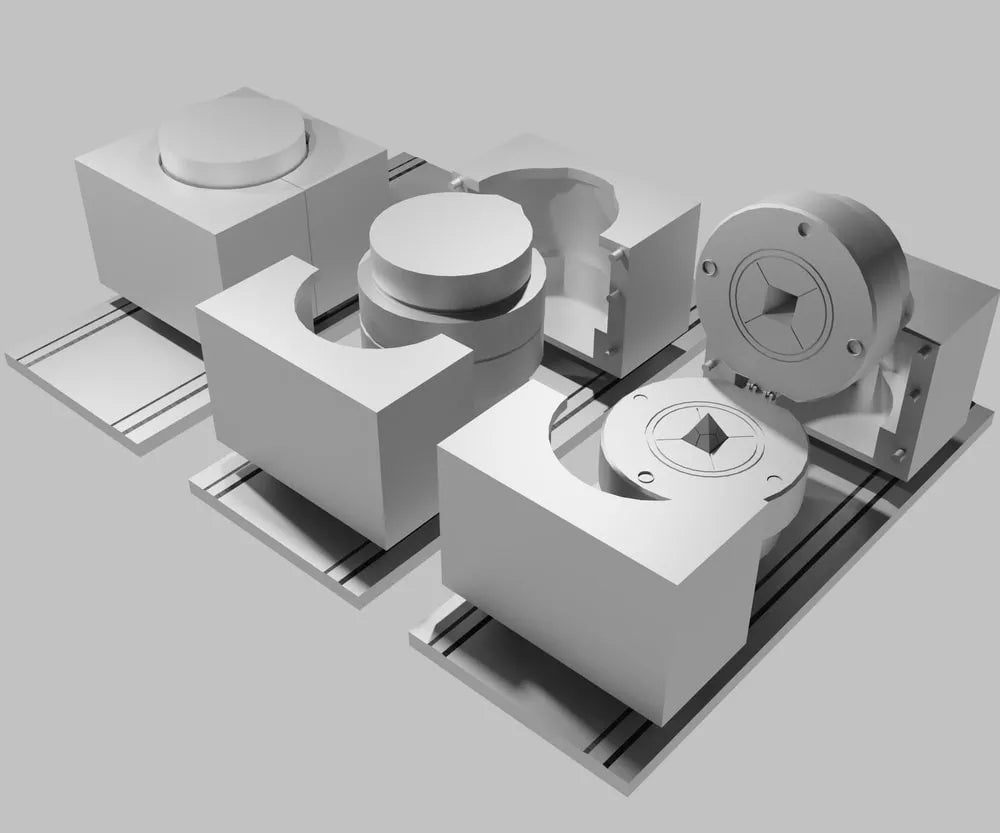
High Pressure High Temperature
- HPHT diamonds are created using one of three methods: the cubic press, the belt press, or the split-sphere press, all of which are designed to replicate the natural diamond-forming conditions deep within the Earth.
- In this process, a small diamond seed is placed into a press and exposed to extreme heat (2,550–2,900°F) and pressure (up to 5.5 million psi). This intense environment causes the surrounding carbon to melt and crystallize around the seed, gradually forming a diamond.
HPHT simulates the Earth’s natural diamond-forming conditions. A small diamond seed is placed in a press and exposed to temperatures of 2,550–2,900°F and pressures up to 5.5 million psi. Carbon melts and crystallises around the seed, forming a diamond.
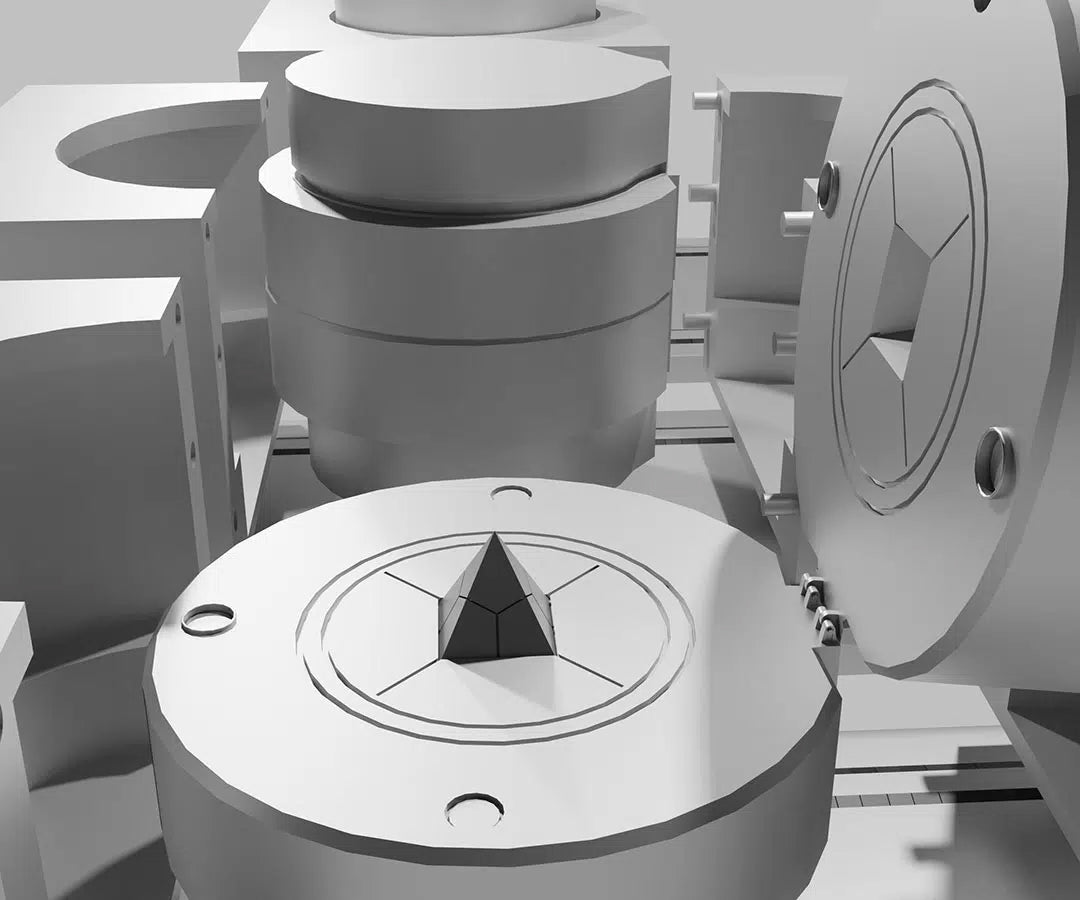
Chemical Vapor Deposition
- The CVD method involves heating gases in a vacuum to produce diamonds atom by atom.
- In this process, a small diamond seed is placed in a sealed chamber that is heated to around 800°C and flooded with carbon-rich gas. The gas ionises, breaking down into pure carbon. As the plasma cools, the pure carbon atoms bond to the original diamond seed. This process continues, gradually building up layers of diamond until it is fully formed.
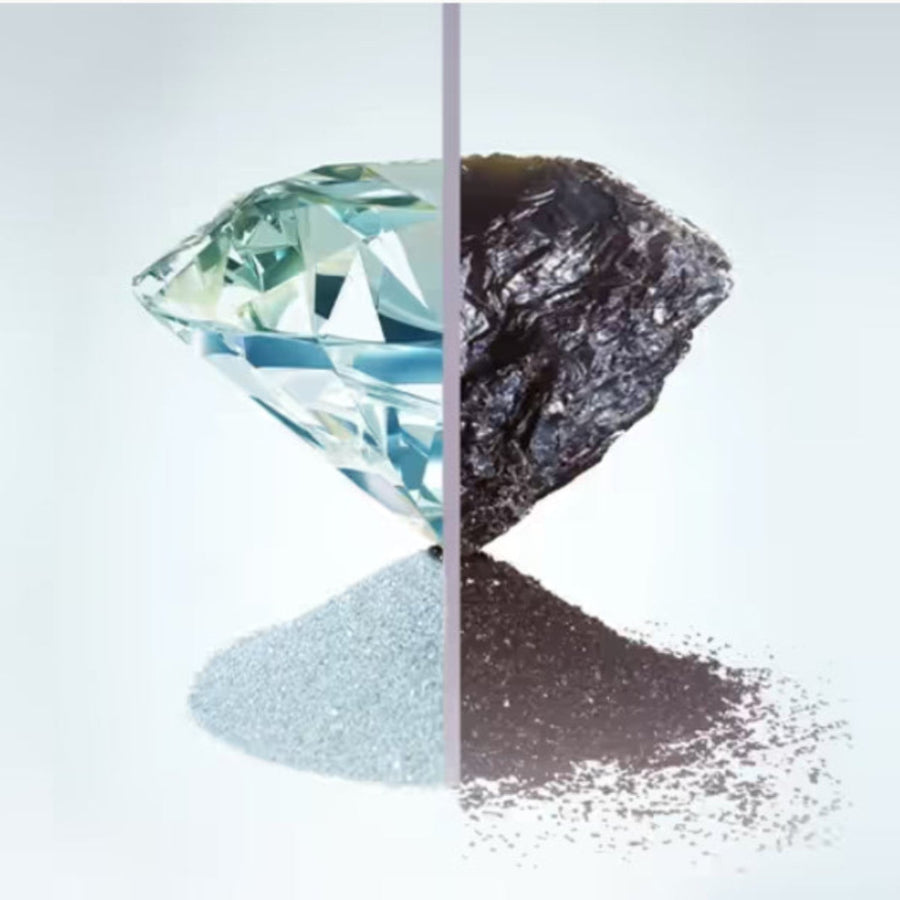
What Are Lab Grown Diamonds Made Of?
Whether grown through HPHT or CVD, the result is identical. A real diamond with the same structure and properties as a natural one. In the end, it all comes down to one thing: Pure Carbon.
Both lab grown and natural diamonds are formed from carbon, which is compressed at high temperatures. This results in the crystallisation, which gives the diamonds their brilliant sparkle for which they are famed. The table below demonstrates the key properties that both types of diamond share.
The Perfect Fusion
WHY CHOOSE LAB GROWN DIAMONDS
Lab-grown diamonds are a modern fusion of science and beauty. Ethically produced, environmentally conscious, and more affordable than mined stones, they offer exceptional quality with none of the trade-offs.
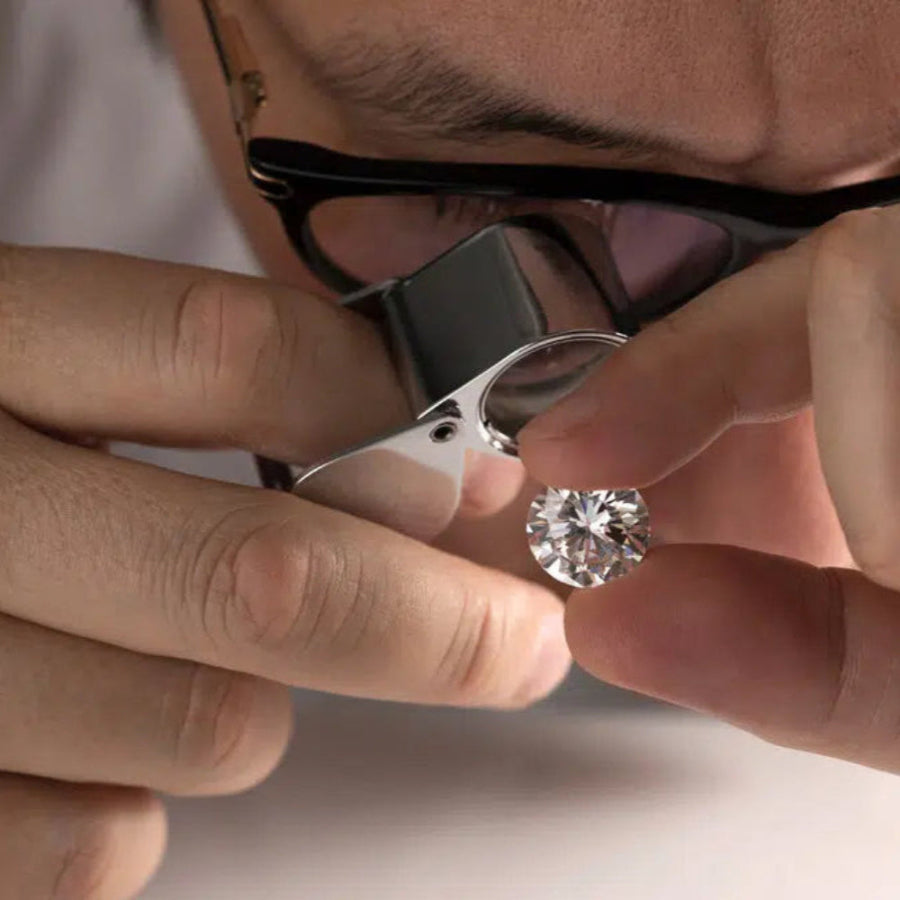
They're identICAL Quality
Lab-grown diamonds are crafted using cutting-edge technology that replicates the natural diamond-growing process. The result? A diamond that is identical in every way to its mined counterpart.
When you compare the two, they are exactly the same. So, if you're looking for a high-quality diamond that is more affordable and has less of an environmental impact, then a lab grown diamond is the perfect choice for you.
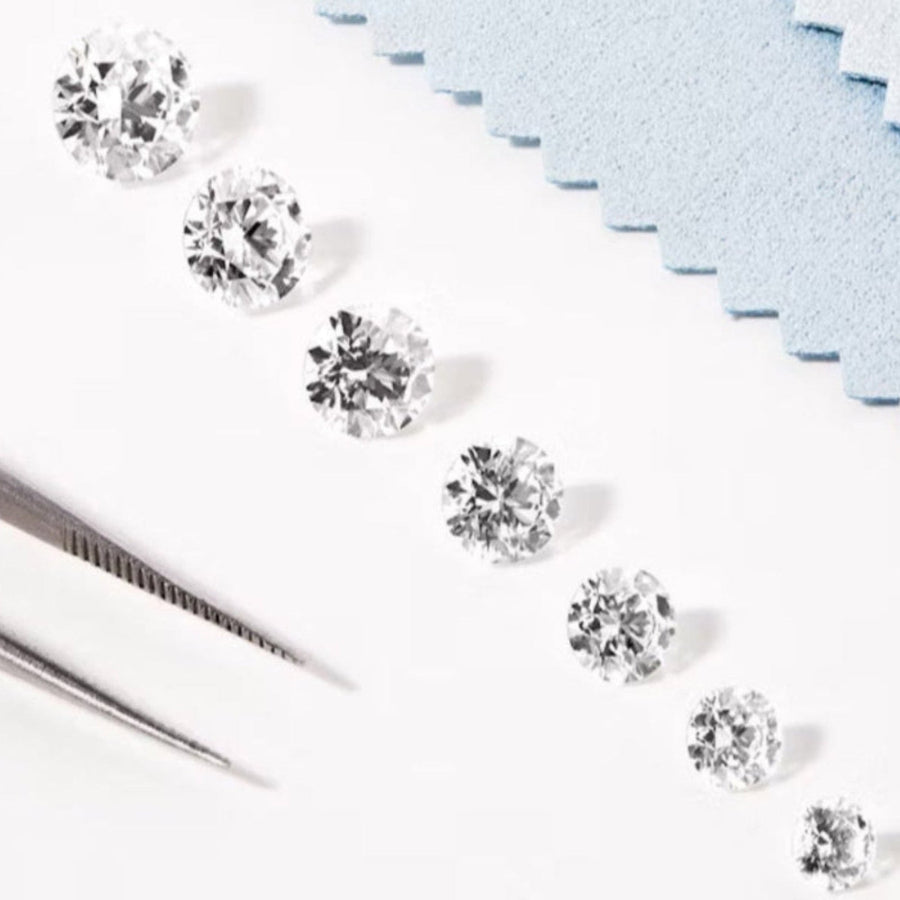
They're affordable
Lab-grown diamonds typically cost 40-50% less than natural diamonds, allowing you to get a larger, higher-quality diamond for the same budget. There are two main reasons making them more affordable:
- Lab-grown diamonds are created in just a few weeks, compared to millions of years for natural diamonds. Plus, being made in a lab eliminates the need for expensive mining and complex supply chains.
- While natural diamonds are limited in supply, lab-grown diamonds can be produced as needed. This flexibility ensures a consistent supply without the constraints of depleting resources, making the entire process far more efficient and cost-effective.
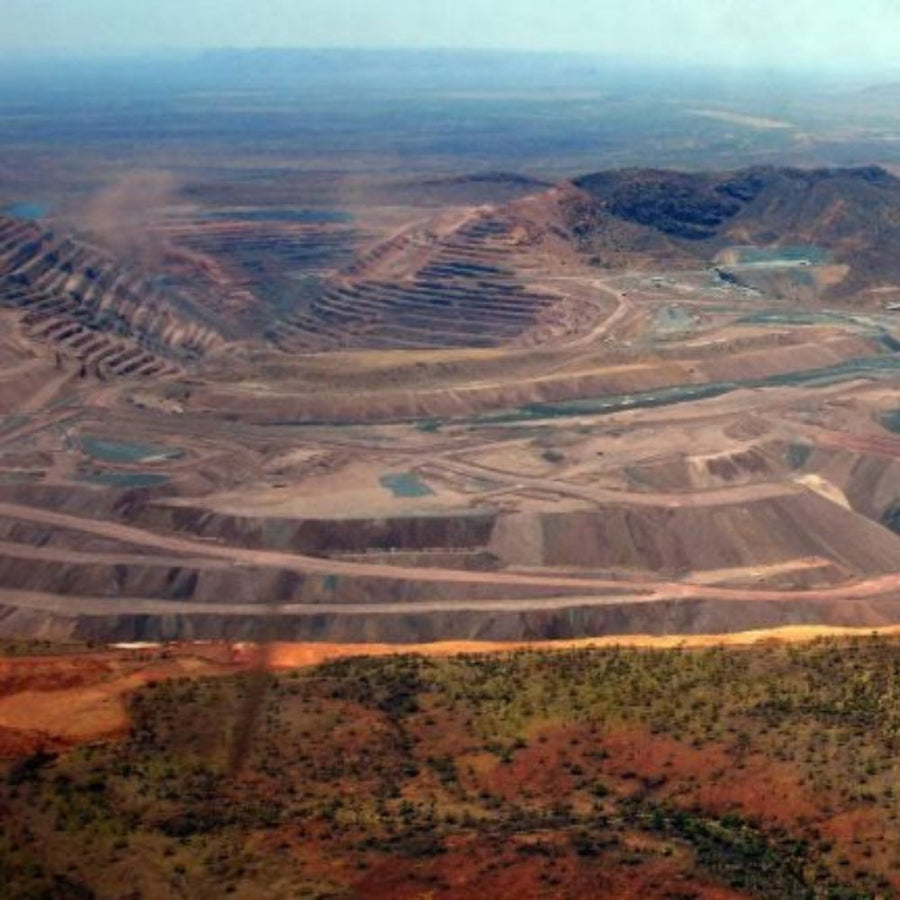
They're Responsible
Lab-grown diamonds are considered a more responsible and sustainable choice, with a significantly lower environmental impact than traditional mining.
- Created in controlled environments, they eliminate the need for harmful mining practices, reducing the strain on our planet's resources.
- Moreover, since they aren’t sourced from conflict regions, they are free from the ethical concerns often linked to mined diamonds, making them a socially responsible option.
What are the key differences and similarities?
Lab grown vs natural diamonds
Lab-grown diamonds have the same physical and chemical properties as mined diamonds, making them just as hard and durable. The only difference lies in their origin, not the final product. In fact, the distinction is so subtle that specialized equipment is required to tell them apart.

“Lab grown diamonds are real diamonds. They have the same optical, chemical, thermal and physical features.”
Matthew Hall, Director, Gemological Institute Of America (GIA).
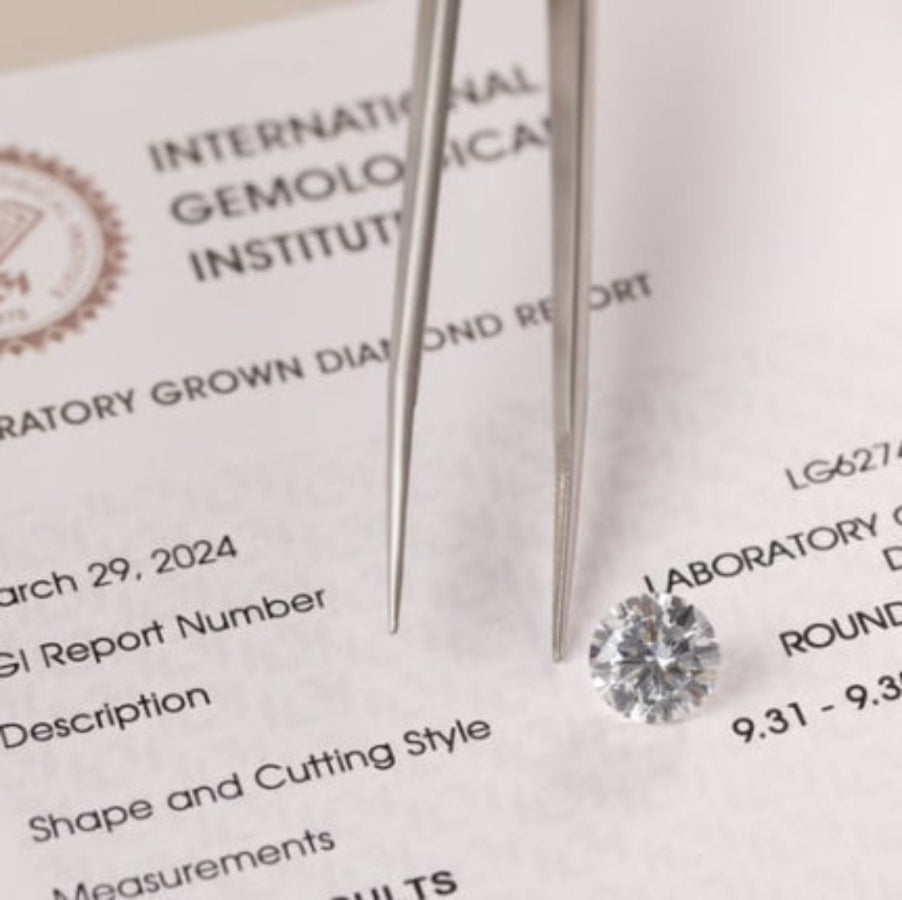
IGI certified
Grading Certificate
Lab-grown diamonds aren’t just a scientific breakthrough, they’re a true alternative to mined diamonds. Real in every way. With identical physical, chemical, optical, and atomic properties, they are indistinguishable from natural diamonds and graded to the same rigorous standards. Like mined diamonds, they are evaluated using the 4Cs, cut, color, clarity, and carat by certified gemological institutes.
Every piece of our jewellery comes with a diamond certificate issued by the Independent Gemological Laboratory (IGI), verifying its quality and authenticity. Giving you complete confidence in its brilliance.
Frequently Asked Questions
Learn More About Lab Diamonds
Discover more with our Frequently Asked Questions guide. From understanding the brilliance of lab-grown diamonds to exploring their quality and origins, our FAQ section has everything you need to make an informed choice.

